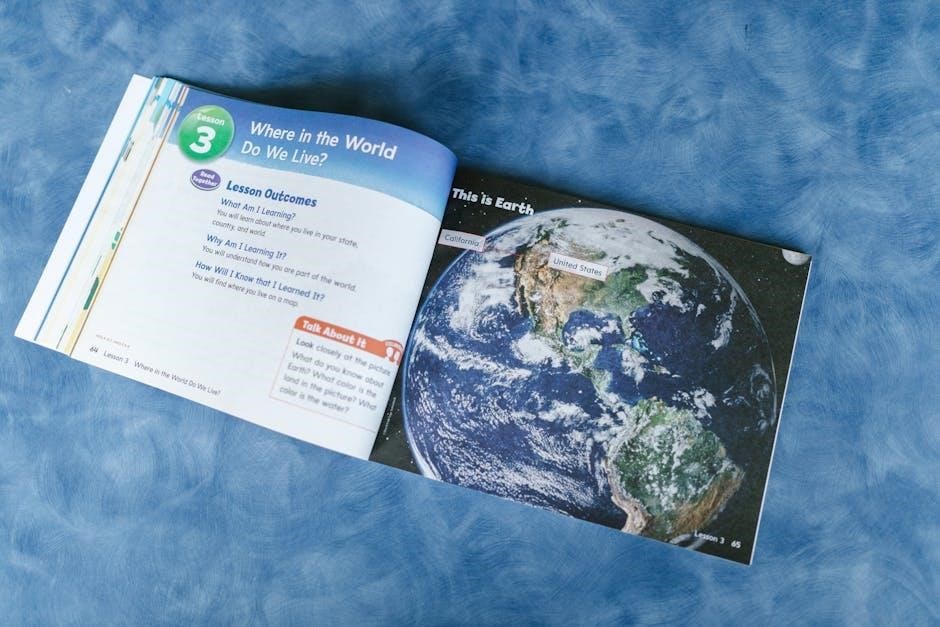Unit 7: Global Warfare Study Guide
This guide explores global conflicts from 1900 to the present, focusing on key themes, historical events, and their impact on society, politics, and technology worldwide.
Global warfare refers to large-scale conflicts involving multiple nations or regions, shaping the modern world from 1900 onward. These wars, including World Wars I and II, and the Cold War, have redefine power dynamics, ideologies, and technological advancements. Key themes include imperialism, nationalism, economic rivalries, and the rise of totalitarian regimes. The study of global warfare examines its causes, major events, and profound consequences on societies, economies, and international relations. Understanding these conflicts provides insight into the complexities of global politics, human costs, and the evolution of military strategies and technologies that continue to influence contemporary geopolitical landscapes.
1.2 Key Themes and Concepts
Key themes in global warfare include imperialism, nationalism, and economic competition, which often fueled conflicts. The rise of totalitarian regimes, militarism, and ideological tensions also played significant roles. Technological advancements, such as nuclear weapons and cyber warfare, transformed military strategies. Concepts like total war, genocide, and humanitarian crises highlight the human cost. The shift in global power dynamics, the impact of international organizations, and the role of diplomacy are central to understanding modern conflicts. These themes provide a framework for analyzing the complexities of warfare and its far-reaching consequences on societies, economies, and political structures worldwide.
1.3 Historical Context (1900-Present)
The period from 1900 to the present has been marked by significant global transformations. The collapse of empires, such as the Ottoman, Russian, and Qing, reshaped international power dynamics. The rise of new nations and ideologies, including communism, fascism, and democracy, influenced conflicts. World War I and II were pivotal, leading to the emergence of the U.S. and Soviet Union as superpowers. The Cold War defined post-1945 geopolitics, while decolonization reshaped the global South. Modern challenges include terrorism, globalization, and technological advancements in warfare, all of which continue to shape the complex landscape of global conflicts and international relations.
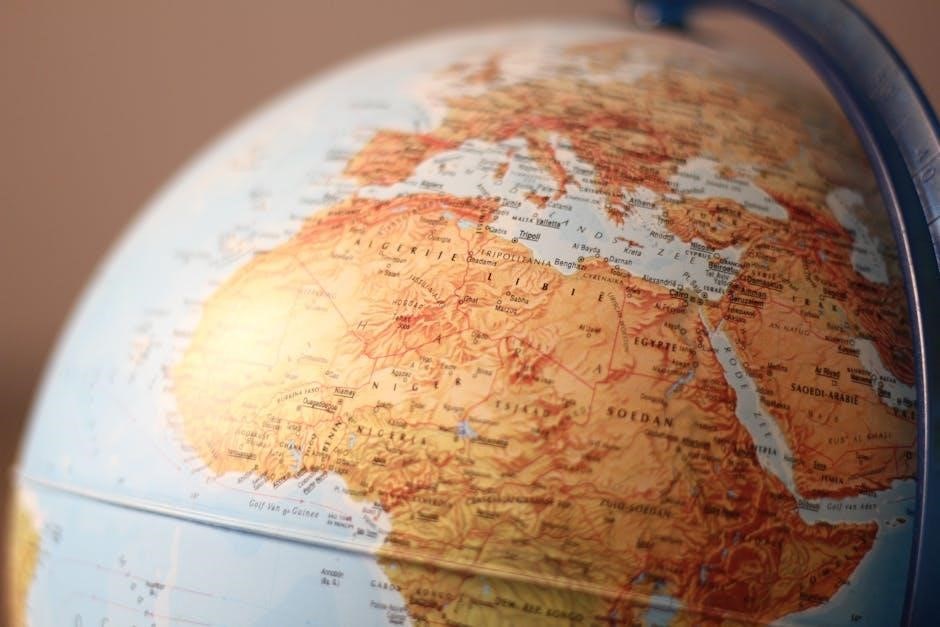
Causes of Global Conflicts
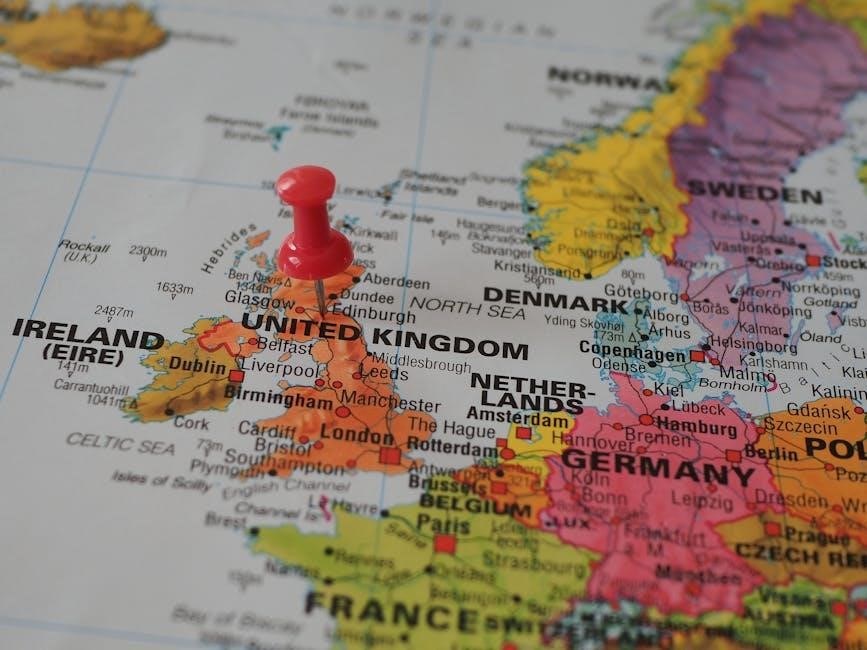
Global conflicts arise from complex factors like imperialism, nationalism, economic competition, and militarism, often exacerbated by resource scarcity, territorial disputes, and ideological tensions between nations and groups.
2.1 Imperialism and Colonial Rivalries
Imperialism and colonial rivalries were significant drivers of global conflicts, as nations sought to expand their territories and resources. European powers, for instance, competed fiercely for colonies in Africa and Asia during the 19th and early 20th centuries. This competition often led to tensions, such as the Scramble for Africa, which heightened rivalries among European nations. Similarly, the rise of new imperial powers, including Japan and the United States, further complicated global dynamics. These rivalries not only led to direct confrontations but also created alliances and animosities that contributed to the outbreak of World War I. Such imperial ambitions frequently destabilized regions and fueled long-term conflicts.
2.2 Nationalism and Ethnic Tensions
Nationalism and ethnic tensions played a pivotal role in global conflicts, often leading to internal instability and external aggression. The rise of nationalist movements destabilized empires, such as the Ottoman and Austro-Hungarian empires, by fostering ethnic divisions. Ethnic tensions in regions like the Balkans exacerbated rivalries among European powers. Nationalist ideologies emphasized self-determination and cultural identity, which sometimes led to violent conflicts. These tensions were exploited by political leaders to justify expansionist policies and militarism. The interplay of nationalism and ethnic rivalries contributed significantly to the outbreak of World War I and continued to shape global conflicts throughout the 20th century, often fueling long-standing animosities between nations and groups.
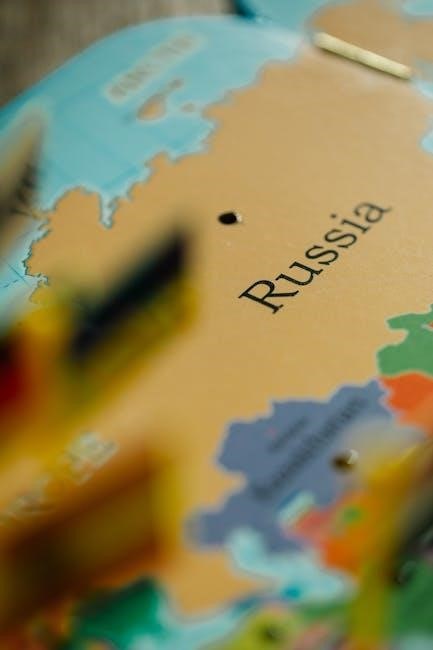
2.3 Economic Competition and Militarism
Economic competition and militarism were central factors in global conflicts, driving nations to expand their resources and influence. Industrialization led to increased economic rivalry, with countries competing for markets, raw materials, and colonies. This competition often escalated into military build-ups, as nations sought to protect their interests. Militarism glorified military strength, fostering an arms race among major powers. The alliance system further intensified tensions, creating a volatile environment where economic disputes could quickly lead to war. These factors were particularly evident in the lead-up to World War I, where economic tensions and military preparations created a precarious balance of power that ultimately collapsed into conflict.

World War I (1914-1918)
World War I (1914-1918) was a global conflict marked by industrialized warfare, political upheaval, and massive casualties, leading to the Russian Revolution and Treaty of Versailles, reshaping the world order.
3.1 Causes of World War I
The causes of World War I were rooted in militarism, alliances, imperialism, and nationalism. The complex system of alliances divided Europe into two opposing blocs, creating a volatile environment. Imperialist competition for colonies and resources heightened tensions, while nationalist sentiments fueled ethnic and territorial disputes. The assassination of Archduke Franz Ferdinand of Austria-Hungary by a Serbian nationalist acted as the immediate trigger. These factors, combined with the aggressive foreign policies of European powers, led to the outbreak of war in 1914. The interplay of these elements created a situation where a localized conflict escalated into a global catastrophe.
3.2 Major Events and Turning Points
World War I saw several pivotal events that shaped its outcome. The assassination of Archduke Franz Ferdinand in 1914 triggered the war’s onset. The Battle of the Marne (1914) halted Germany’s advance on Paris, while the Battle of Verdun (1916) and the Battle of the Somme (1916) highlighted the war’s brutal stalemate. The United States entered the war in 1917 after Germany resumed unrestricted submarine warfare and sank the Lusitania. The Russian Revolution in 1917 led to Russia’s withdrawal, allowing Germany to focus on the Western Front. The Allied victory in the Battle of Amiens (1918) marked a turning point, leading to the Armistice on November 11, 1918.
3.3 Consequences of World War I
World War I left profound consequences globally. The Treaty of Versailles imposed harsh penalties on Germany, fueling resentment and economic instability. The war led to the collapse of empires, including the Ottoman, Russian, and Austro-Hungarian, reshaping borders and creating new nations. The Russian Revolution brought the Bolsheviks to power, establishing the Soviet Union. Economically, the war disrupted global trade, leading to inflation and unemployment. Politically, the rise of authoritarian regimes like fascism in Italy and Nazism in Germany began. Socially, the war accelerated women’s suffrage movements and highlighted the horrors of modern warfare, leading to widespread disillusionment with nationalism and militarism.
3.4 Key Figures and Leaders
Key figures in World War I included political and military leaders who shaped the conflict’s trajectory. Woodrow Wilson, the U.S. President, advocated for the Fourteen Points and the League of Nations. David Lloyd George of Britain and Georges Clemenceau of France were instrumental in the Allied victory. Kaiser Wilhelm II of Germany and Emperor Franz Joseph of Austria symbolized the Central Powers. Military leaders like General Douglas Haig and General John Pershing played pivotal roles in strategic decisions. Additionally, figures like Tsar Nicholas II of Russia and Mustafa Kemal Atatürk emerged as influential leaders during and after the war, impacting its outcome and post-war dynamics significantly.
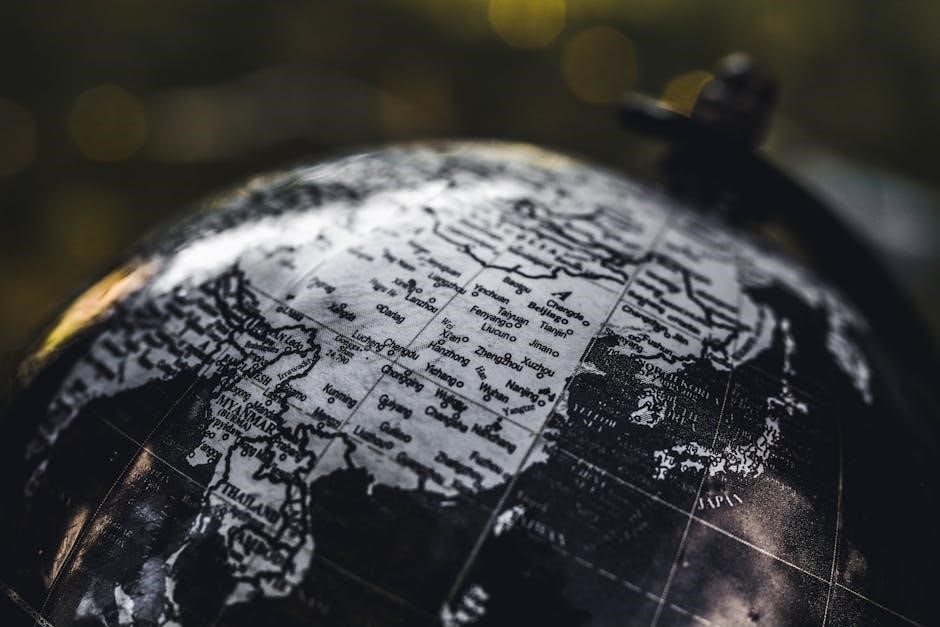
The Interwar Period (1918-1939)
The interwar period (1918-1939) saw global instability, with the Treaty of Versailles causing widespread resentment. The rise of totalitarian regimes, economic crises like the Great Depression, and the collapse of the international order set the stage for World War II.
4.1 The Treaty of Versailles and Its Impact
The Treaty of Versailles (1919) ended World War I but imposed harsh penalties on Germany, including significant territorial losses and heavy reparations; The War Guilt Clause blamed Germany for the war, fueling resentment. The treaty’s terms destabilized Europe, contributing to economic hardship and political extremism. Germany’s economic crisis, hyperinflation, and unemployment created fertile ground for the rise of Adolf Hitler and the Nazi Party. The treaty also failed to establish a lasting peace, as it ignored the aspirations of smaller nations and left unresolved territorial disputes. Its punitive measures are widely seen as a catalyst for World War II.
4.2 Rise of Totalitarian Regimes
The interwar period saw the rise of totalitarian regimes in Europe, particularly in Germany, Italy, and the Soviet Union. Adolf Hitler’s Nazi Party exploited Germany’s post-war economic and political instability, promising national revival and scapegoating minorities. Benito Mussolini established fascism in Italy, emphasizing authoritarian rule and aggressive nationalism. In the Soviet Union, Joseph Stalin consolidated power through purges and collectivization, creating a highly centralized state. These regimes suppressed political opposition, controlled media, and promoted cults of personality. Their aggressive expansionist policies and ideologies of racial superiority set the stage for World War II, as democratic nations struggled to respond effectively to their rise.
4.3 Appeasement Policy and Its Failure
Appeasement, pursued by Britain and France, aimed to avoid war by conceding to Axis demands. Notably, the 1938 Munich Agreement allowed Nazi Germany to annex Sudetenland in Czechoslovakia, hoping to satisfy Hitler’s ambitions. However, this emboldened Hitler, who invaded the remainder of Czechoslovakia in 1939. The policy failed to prevent aggression and only delayed inevitable conflict. Critics like Winston Churchill argued that appeasement signaled weakness, encouraging further expansion. The invasion of Poland in 1939 finally led Britain and France to declare war, marking the start of World War II and highlighting the futility of appeasement as a strategy to maintain peace.
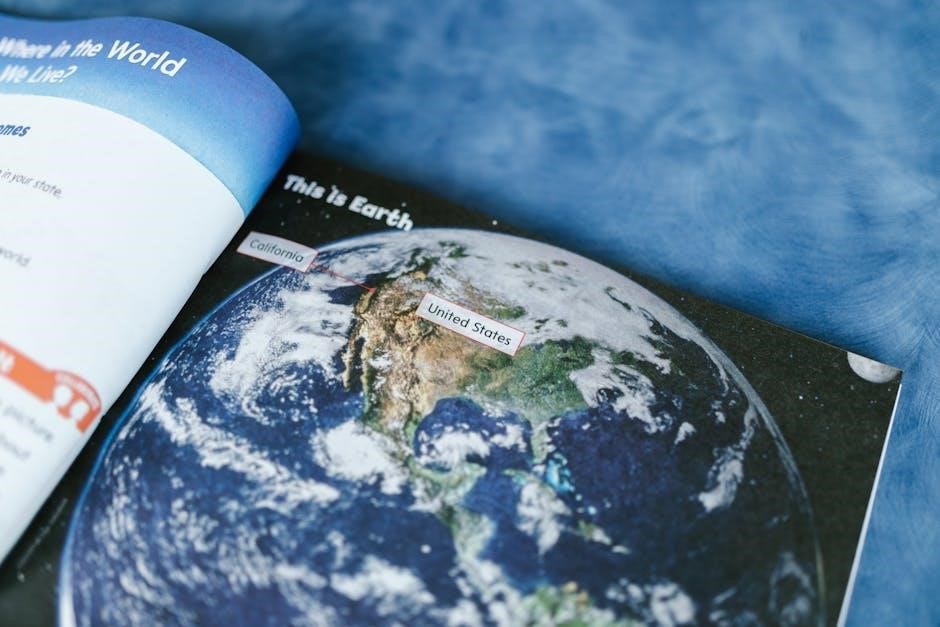
World War II (1939-1945)
World War II was a global conflict involving Axis and Allied powers, marked by major battles in Europe and the Pacific, the Holocaust, and significant geopolitical shifts.
5.1 Causes of World War II
The causes of World War II were multifaceted, including the rise of fascist regimes in Germany, Italy, and Japan, fueled by nationalism and militarism. The Treaty of Versailles imposed harsh penalties on Germany after World War I, leading to economic hardship and resentment. Adolf Hitler exploited these conditions, promoting aggressive expansionism and racial ideology. Additionally, the policy of appeasement by Britain and France emboldened Nazi Germany, allowing territorial annexations without resistance. The invasion of Poland in 1939 triggered the war, as the Allied powers finally took a stand against Axis aggression.
5.2 Major Theaters and Battles
World War II was fought across multiple theaters, with key battles shaping its outcome. In Europe, the Eastern Front saw brutal clashes like Stalingrad and Leningrad, while the Western Front featured D-Day and the Battle of the Bulge. The Pacific Theater witnessed island-hopping campaigns, including Midway, Guadalcanal, and Iwo Jima. North Africa was another critical region, with battles like El Alamein. The war also saw the devastating use of atomic bombs on Hiroshima and Nagasaki. These battles involved massive military forces and strategic decisions, ultimately leading to the Allied victory in 1945.
5.3 The Holocaust and Genocide
The Holocaust, a systematic genocide during World War II, targeted six million Jews and millions of others deemed undesirable by the Nazi regime. Concentration camps like Auschwitz and Treblinka were sites of mass extermination. The Final Solution, implemented by the Nazis, aimed to eliminate entire groups through forced labor, starvation, and gas chambers. Other genocides occurred in Axis-occupied territories, such as the Porajmos against Roma people and mass killings in Eastern Europe. These atrocities highlight the extreme horrors of totalitarian ideology and racism, serving as a grim reminder of humanity’s capacity for evil and the importance of vigilance against hatred and oppression.
5.4 Consequences of World War II
World War II resulted in unprecedented devastation, with an estimated 70-85 million fatalities. The war led to the emergence of the United States and the Soviet Union as superpowers, setting the stage for the Cold War. The Yalta Conference reshaped Europe, dividing it into Eastern and Western blocs. The Holocaust exposed the horrors of genocide, prompting global efforts to prevent future atrocities. The United Nations was established to maintain international peace. Economically, many nations faced rebuilding challenges, while the Marshall Plan aided Europe’s recovery. The war also spurred technological advancements and decolonization, as European empires dissolved, leading to independence movements worldwide.
5.5 Key Figures and Leaders
World War II saw the rise of influential leaders who shaped its course and outcome. Winston Churchill, as Britain’s Prime Minister, delivered impassioned speeches that rallied resistance against Nazi Germany. Joseph Stalin led the Soviet Union, playing a crucial role in defeating the Axis powers, despite his controversial policies. Adolf Hitler, the dictator of Nazi Germany, orchestrated aggressive expansion and the Holocaust. Benito Mussolini, Italy’s fascist leader, aligned with Hitler but faced internal opposition. Franklin D. Roosevelt, the U.S. President, championed Allied efforts and post-war rebuilding. Hirohito, Japan’s Emperor, oversaw the war’s escalation, while military leaders like George S. Patton and Bernard Montgomery were pivotal in Allied victories. Dwight D. Eisenhower coordinated D-Day and European campaigns, while figures like Mao Zedong and Chiang Kai-shek influenced Asia’s wartime dynamics. These leaders’ decisions and ideologies had lasting impacts on the world.
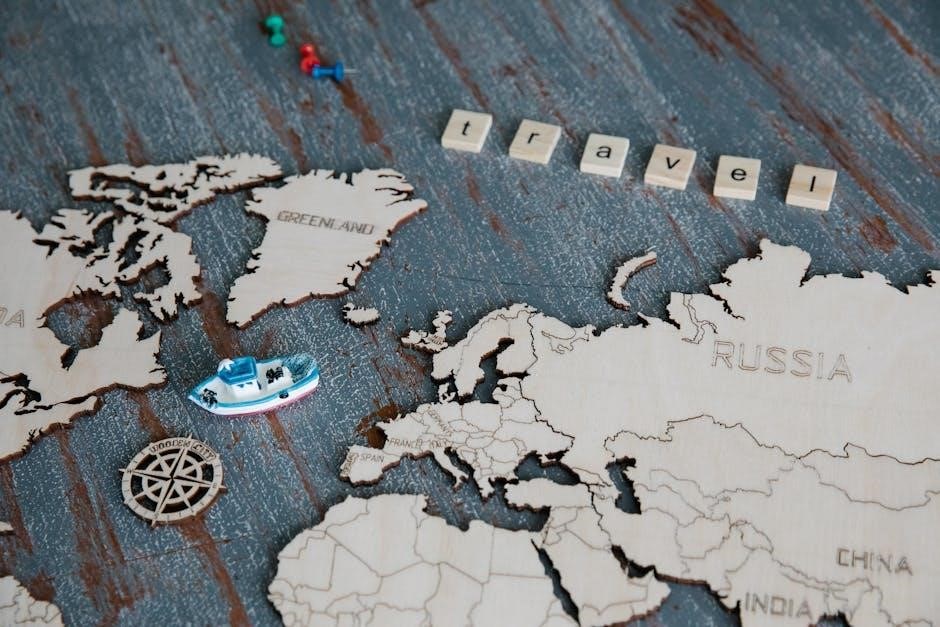
The Cold War (1947-1991)
The Cold War was a geopolitical tensions period between the U.S. and Soviet Union, marked by proxy wars, espionage, and ideological competition, shaping global politics.
6.1 Origins of the Cold War
The origins of the Cold War trace back to post-WWII tensions between the United States and the Soviet Union. Disagreements over territorial control, ideological differences, and the division of Europe, particularly Germany, fueled the conflict. The Yalta and Potsdam Conferences exposed deep divisions, while the Truman Doctrine and Marshall Plan symbolized U.S. efforts to contain Soviet influence. The Soviet Union’s expansion into Eastern Europe and the creation of the Iron Curtain further solidified the ideological and geopolitical divide, setting the stage for decades of rivalry, proxy wars, and a nuclear arms race.
6.2 Key Events of the Cold War
The Cold War was marked by significant events that shaped its progression. The Berlin Blockade and Airlift (1948-1949) demonstrated the early divide, while the Korean War (1950-1953) and Vietnam War (1955-1975) highlighted proxy conflicts. The Cuban Missile Crisis (1962) brought the world to the brink of nuclear war. McCarthyism in the U.S. reflected internal fears of communism. The Space Race, symbolized by the Soviet Union’s Sputnik launch (1957) and the U.S. Moon landing (1969), showcased technological rivalry. These events underscored the ideological, geopolitical, and technological tensions defining the Cold War era.
6.3 Impact of the Cold War on Global Politics
The Cold War profoundly influenced global politics, creating a bipolar world dominated by the U.S. and the Soviet Union. It led to the formation of alliances like NATO and the Warsaw Pact, shaping international relations. Decolonization was accelerated as both superpowers sought influence in newly independent nations. Proxy wars in regions like Korea, Vietnam, and Afghanistan destabilized local governments. The arms race spurred technological advancements but also increased global tensions. Additionally, the Cold War fostered propaganda and ideological competition, dividing the world into capitalist and communist blocs. Its legacy continues to affect modern geopolitical strategies and international relations.
6.4 Key Figures and Leaders
Key figures during the Cold War included Winston Churchill, Joseph Stalin, Mao Zedong, Harry Truman, and John F. Kennedy. Churchill’s “Iron Curtain” speech symbolized the division between East and West. Stalin’s leadership in the Soviet Union solidified its role as a superpower. Truman’s decision to drop atomic bombs and initiate the Marshall Plan shaped postwar policies. Kennedy’s leadership during the Cuban Missile Crisis prevented global catastrophe. Mao Zedong’s communist reforms in China added complexity to the geopolitical landscape. These leaders’ decisions and ideologies profoundly influenced the Cold War’s progression, shaping alliances, military strategies, and the eventual collapse of the Soviet Union.
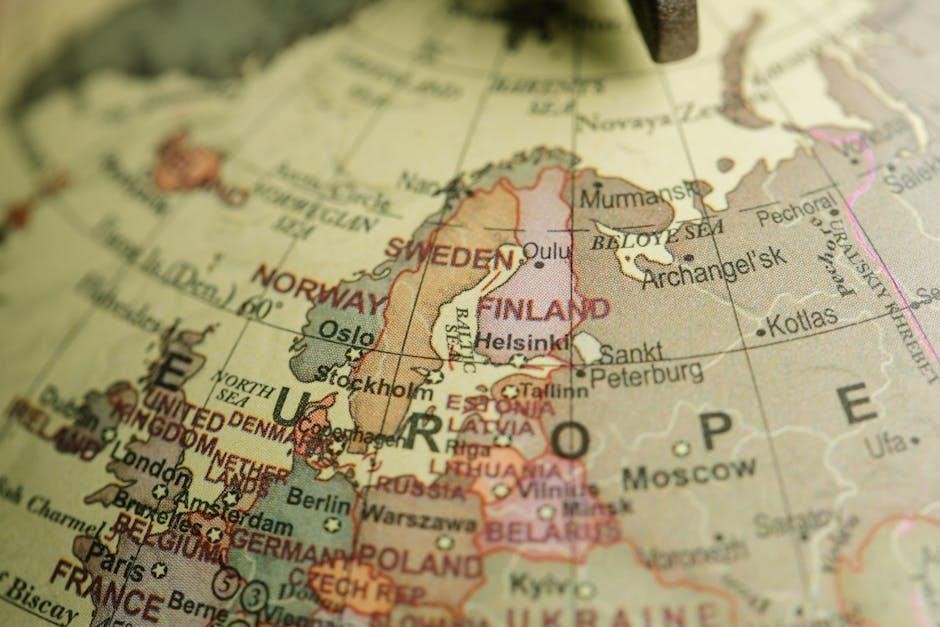
Beyond the Cold War (1991-Present)
The post-Cold War era saw shifting global power dynamics, the rise of new world powers, and technological advancements reshaping international relations and global security frameworks.
7.1 Globalization and Its Effects
Globalization has reshaped the world economy and culture, fostering interdependence among nations through trade, technology, and cultural exchange. It has spurred economic growth and innovation but also led to job displacement and inequality. Multinational corporations have gained significant influence, while technological advancements like the internet have connected societies. However, globalization has also raised concerns about cultural homogenization and environmental degradation. It has created opportunities for cooperation but also challenges, such as managing global supply chains and addressing issues like climate change. The post-Cold War era has seen globalization accelerate, transforming how nations interact and compete in a increasingly interconnected world.
7.2 Modern Conflicts and Terrorism
Modern conflicts have evolved beyond traditional state-on-state warfare, with terrorism emerging as a significant threat. Groups like Al-Qaeda and ISIS employ asymmetric tactics, targeting civilians to instill fear and destabilize governments. These organizations often exploit regional instability and ideological grievances, using global communication networks to spread propaganda. Terrorism has led to increased military interventions and surveillance, raising ethical concerns about civil liberties. The rise of cyberterrorism further complicates modern conflict, as digital attacks can disrupt critical infrastructure. International cooperation is essential to combat these threats, yet challenges remain in balancing security with human rights and addressing root causes of extremism in a globalized world.
7.3 Role of International Organizations
International organizations play a crucial role in addressing global conflicts and promoting peace. The United Nations (UN) serves as a primary platform for diplomacy and conflict resolution, facilitating dialogue and peacekeeping missions. Organizations like NATO and the European Union (EU) focus on regional security and cooperation. Humanitarian groups such as the Red Cross and Médecins Sans Frontières provide aid to war-affected populations. Additionally, financial institutions like the IMF and World Bank assist in rebuilding economies post-conflict. These organizations collectively aim to stabilize regions, prevent atrocities, and foster development, though their effectiveness often depends on member states’ cooperation and resource allocation in a complex geopolitical landscape.

Technological Advancements in Warfare
Technological advancements have transformed warfare, introducing nuclear weapons, cyber warfare, and drones, which enhance military capabilities and create new challenges in modern conflict scenarios globally.
8.1 Development of Nuclear Weapons
The development of nuclear weapons in the mid-20th century revolutionized warfare, offering unprecedented destructive power. The Manhattan Project during World War II led to the creation of atomic bombs, which were first used in 1945 on Hiroshima and Nagasaki, causing catastrophic damage and loss of life. This marked the beginning of the nuclear age, raising ethical and strategic concerns globally. The threat of mutual assured destruction (MAD) became a central concept during the Cold War, influencing geopolitical tensions and arms races. The proliferation of nuclear weapons continues to pose significant risks to global security and stability today.
8.2 Cyber Warfare and Its Implications
Cyber warfare has emerged as a significant component of modern conflict, involving attacks on digital systems, infrastructure, and data. It allows nations and non-state actors to disrupt enemies without physical engagement, targeting critical sectors like energy, finance, and defense. The implications are profound, including potential loss of privacy, economic destabilization, and compromised national security. Cyberattacks, such as data breaches and ransomware, highlight vulnerabilities in global systems. Attribution challenges complicate responses, as attackers often remain anonymous. This form of warfare demands advanced defensive strategies and international cooperation to establish norms and regulations. Its evolution continues to reshape military tactics and geopolitical power dynamics.
8.3 Drones and Modern Military Technology
Drones, or unmanned aerial vehicles (UAVs), have revolutionized modern warfare by enabling precision strikes and real-time surveillance without risking human lives. Their versatility in reconnaissance and combat missions has made them indispensable in contemporary conflicts. Modern military technology also includes advancements in artificial intelligence, cyber capabilities, and autonomous systems, which enhance operational efficiency and strategic decision-making. However, the proliferation of drones raises ethical concerns, such as civilian casualties and the potential for autonomous warfare. These technologies underscore the evolving nature of warfare, blending traditional tactics with innovative tools to achieve military objectives. Their impact continues to reshape global security and defense strategies.
Impact of Global Warfare on Civilians
Global warfare profoundly affects civilians, causing displacement, humanitarian crises, economic hardship, and social disruption. It often leads to long-term psychological trauma and cultural erosion.
9.1 Humanitarian Crises and Refugees
Global warfare often results in devastating humanitarian crises, displacing millions and creating massive refugee populations. These crises arise from armed conflicts, persecution, and environmental disasters, leading to loss of livelihoods, homes, and families. Refugees frequently face overcrowded camps, inadequate resources, and heightened risks of disease. The global refugee crisis has grown significantly, with prolonged conflicts in regions like the Middle East and Africa exacerbating the issue. International organizations and governments struggle to provide sufficient aid, while political and economic challenges complicate resettlement efforts. Addressing the root causes of displacement is crucial to mitigating these crises and ensuring the protection of vulnerable populations worldwide.
9.2 Economic Costs of Warfare
Warfare imposes immense economic costs, including direct expenses like weapons, military personnel, and infrastructure damage. Indirect costs involve lost productivity, disrupted trade, and long-term reconstruction expenses. Nations often incur significant debt to finance conflicts, leading to economic instability and inflation. The destruction of industries and resources hampers economic growth, while the loss of human capital due to casualties or displacement further strains economies. Additionally, the global economy suffers from trade disruptions, resource shortages, and increased prices for essential goods. These economic burdens can linger for decades, affecting not only the warring nations but also the global community, as resources are diverted from development to warfare.
9.3 Social and Cultural Changes
Global warfare has profound social and cultural impacts, reshaping societies and identities. Wars often accelerate nationalism, fostering unity within nations but fueling tensions between them. Propaganda emerges to shape public opinion, influencing cultural narratives and perceptions of enemies. Gender roles may shift, as women enter the workforce during conflicts, challenging traditional norms. Additionally, warfare can lead to cultural exchanges, as soldiers and civilians interact across borders, influencing art, literature, and music. However, the destruction of cultural heritage and displacement of populations also occur, erasing historical identities. These changes often persist post-conflict, leaving lasting effects on societal structures and cultural expression worldwide.
